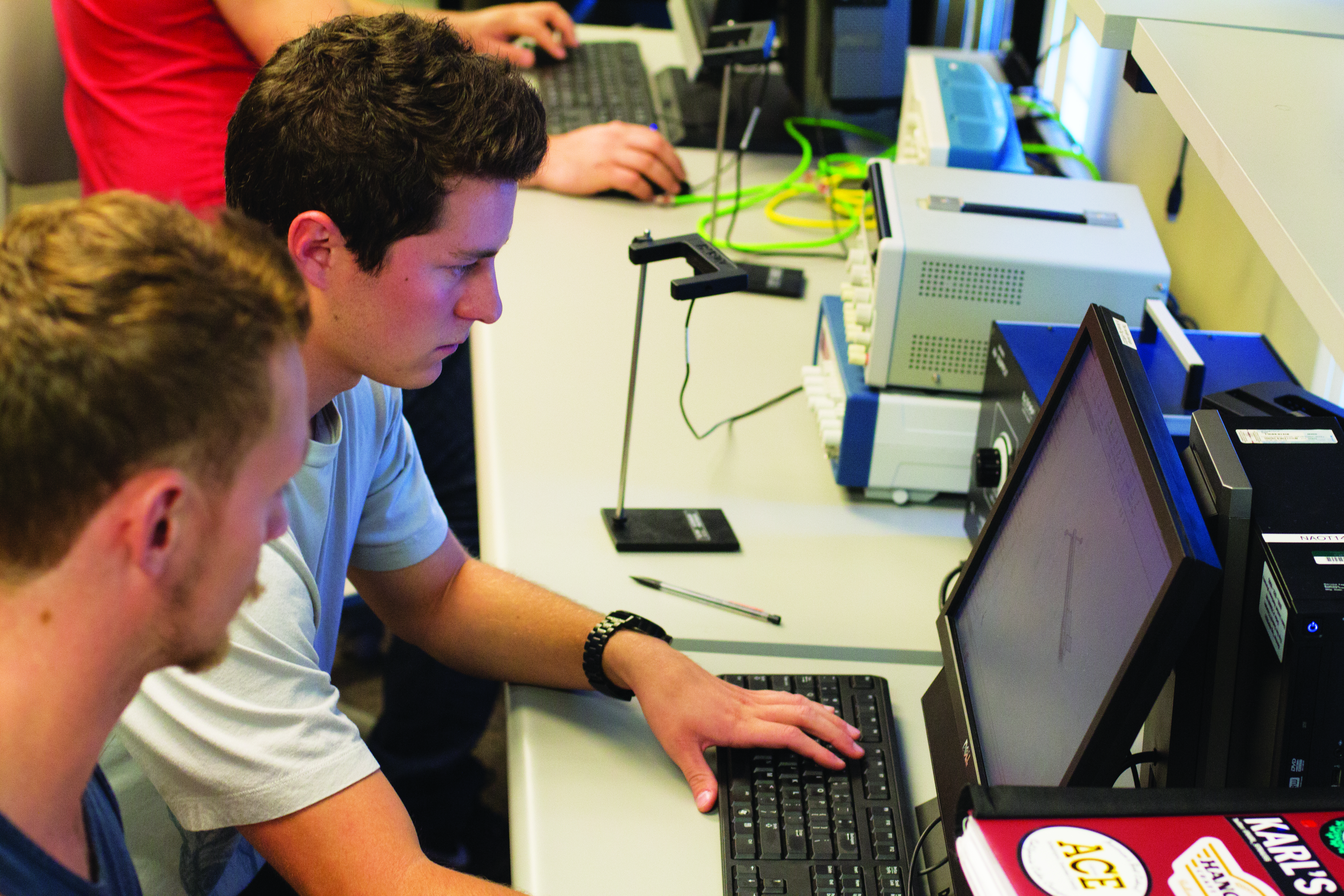
Jonathan Tuttle and Taylor Keigwin, both senior mechanical engineer majors, discuss technical implications of the lift and the pieces that are required for their prototype. Jared Overstreet | Banner
This fall semester, senior engineering students started the first half of a yearlong capstone design project based on their concentration.
The culmination of their work will be put on display next semester and incorporated into their senior portfolio.
Students design schematics, prototypes and technical specifications based on knowledge accumulated from the start of their undergraduate studies.
There are currently three capstone design courses: mechanical, civil, and electrical and computer engineering.
One mechanical engineering capstone design project is based on creating an efficient fuel barrel lift system for New Tribes Mission Aviation.
“New Tribes Mission reaches unreached people around the world by sharing the gospel,” said Jonathan Tuttle, senior mechanical engineering major. “They use a specific plane called the Quest Kodiak.”
The structure of the Quest Kodiak is efficient for transporting missionaries and supplies to remote populations.
“The 55 gallon fuel barrels are around 500 pounds and are loaded in the cabin,” Taylor Keigwin said. “Five hundred pounds is too much for humans to lift into the aircraft, so they are asking us to design a lift system with a mechanical advantage so that loading will be easier.”
The fuel barrel lift system has the potential to help New Tribes Mission and other organizations load and unload fuel barrels into the aircraft.
“These places are so remote that there are no refueling stations available,” Keigwin said. “The pilots need to make sure to bring their own fuel with them.”
The project is no easy feat for undergraduate students. Hundreds of hours are dedicated to making the capstone designs as accurate and efficient as possible.
Professors give minimal information to the students so that they can experience the challenges they will face with future employers when asked to start assignments from scratch.
“It’s hard to come up with something when we don’t know what New Tribes Mission was doing with the equipment in the first place,” Jennifer Fugger, senior mechanical engineering major said. “We don’t know what it looks like in person and what the cargo looks like or how they used to load the barrels.”
One purpose of the capstone project is for students to gain experience functioning cooperatively as a team.
“We’re developing experience working hands on with materials and using principles that we’ve learned and putting them to use on a project,” said Stephen Warburg, senior mechanical engineering major.
Since New Tribes Mission Aviation is based on reaching people in search of the gospel, these students have emphasized a Christian perspective on their project.
“This project will help people work with other countries that are less fortunate and looking for religion,” Fugger said.
The capstone design projects will be presented next semester where members of the Engineering Advisory Council will critique the final designs and functions.
“All the teams are composed of wonderful, hardworking students,” said Amanie Abdelmessih, professor of mechanical engineering. “They are team players and I am looking forward to seeing the results next semester.”


